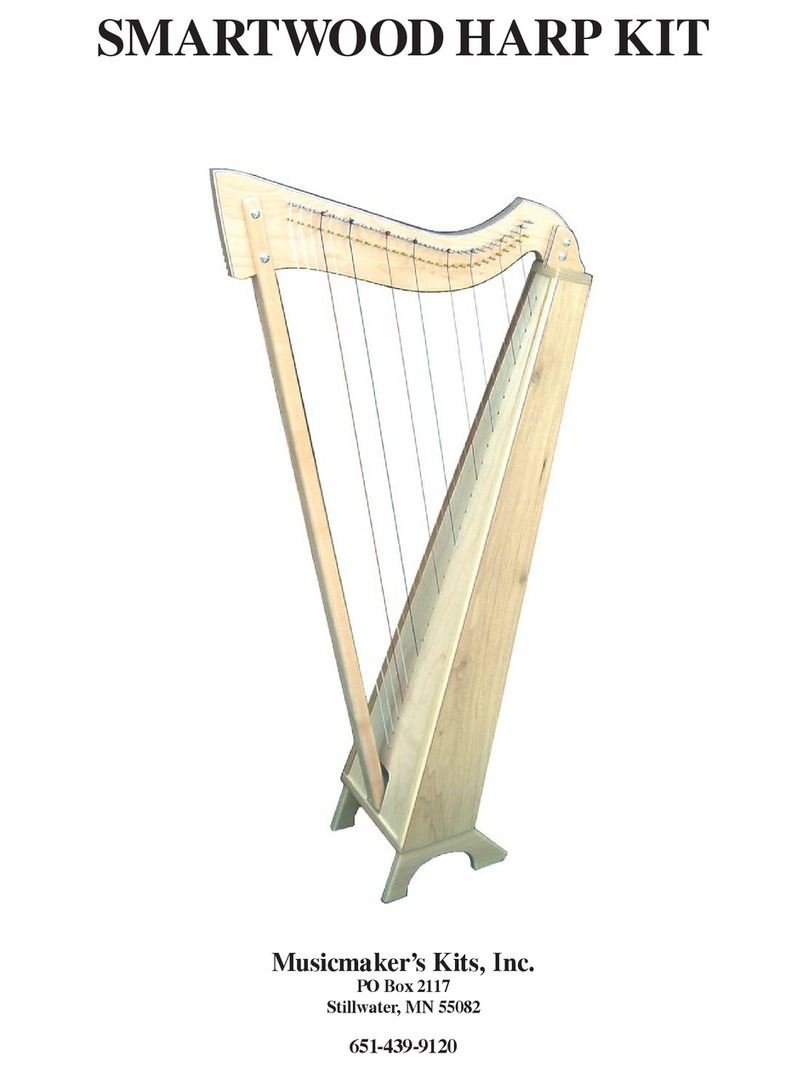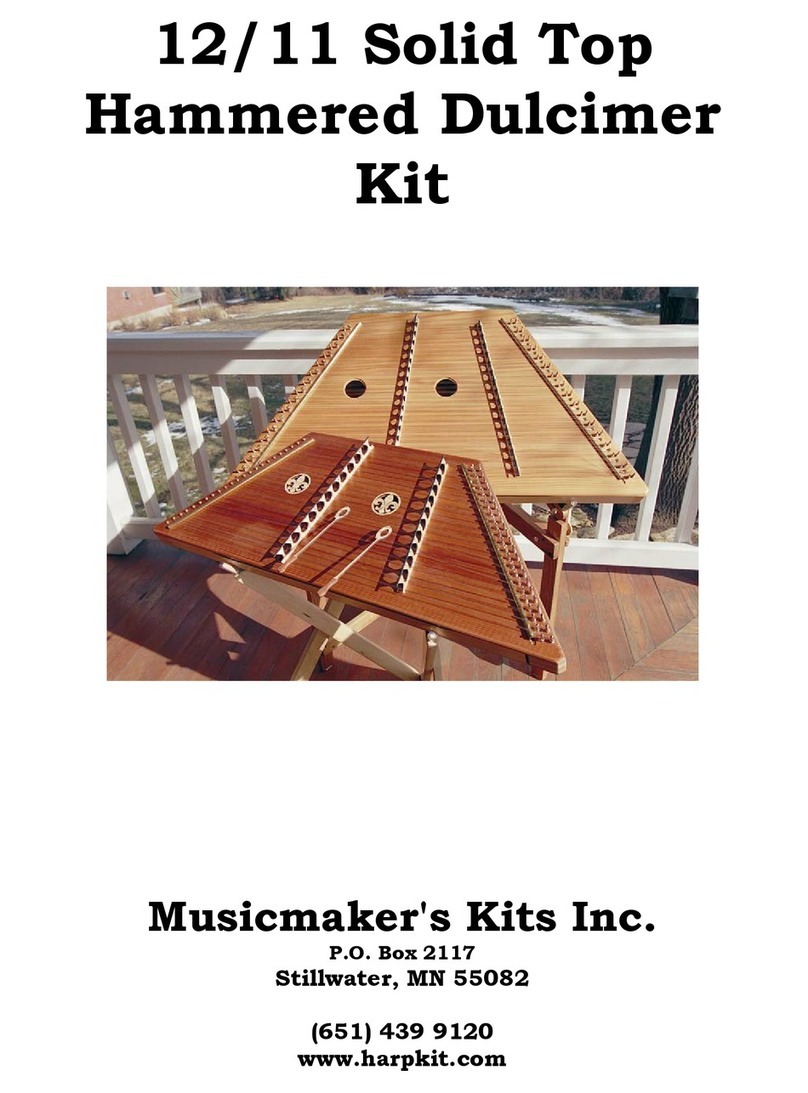
© Musicmakers 6/29/2018
3
Thread the other end of the string through the last TUNING PIN at the point of the NECK. Pull it
through the PIN until there is some slack below the pin.
Turn the PIN clockwise with the tuning wrench and guide
the windings of the string downward toward the wood. As
the string begins to tighten, place it in the groove of the
GUIDE PIN.
HINT: Do not accumulate a lot of windings of string
around the TUNING PINS, especially in the bass. They
become bulky and cumbersome. If you find yourself with
that problem, turn the TUNING PIN backwards to unwind
the string and then pull more slack through the hole
before tightening again.
_____4. When you come to the .050” and higher strings, tie
the bottom knot a little differently to give it more bulk. Start
with the same overhand knot, but before tightening it; push
the loose end part way back into the knot, just to add one
more thickness of string to the knot.
_____5. For the rest of the strings (sizes .040” and higher),
thread a small plastic bead onto each string before tying the
knot. The bead will prevent the knotted string from pulling
through the hole in the SOUNDBOARD.
ANOTHER HINT: We also like to anchor the tops of these
lighter strings securely to the tuning pins, as follows: Make
one or two windings of string around the tuning pin, then
cross the next winding over the others so the string is
holding itself tightly around the PIN. Otherwise we often
experience string slippage and breakage, especially in the
upper half of the instrument.
CAUTION: Nylon strings are somewhat fragile, especially in
the upper octaves. Try to avoid scratching them as you
install them. Most string breakage occurs at the tuning pin,
when the string is pulled forcefully around the sharp corner
of the small hole in the metal. You can minimize the problem by installing the string carefully and
by anchoring the windings before applying too much tension to
the strings, so the nylon does not begin to slip back through the
hole under tension and become scratched.
_____6. When you come to the lightest strings (.025”
diameter), you will need to add a short piece of heavier
string into the knot in order to make the knot bulky enough
to keep from pulling through the hole in the plastic bead.
Just use some scraps of excess nylon from the bottom
strings. When all the strings are installed, tighten them to
pitch and allow the instrument to adjust itself to the tension.






























